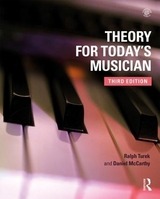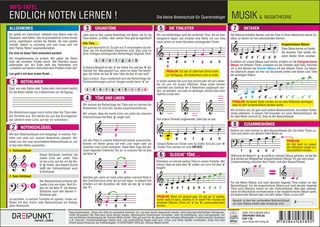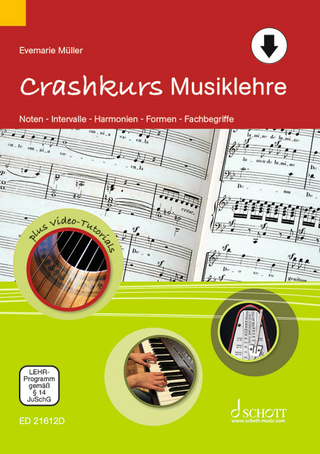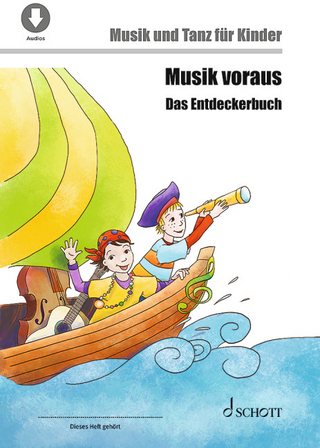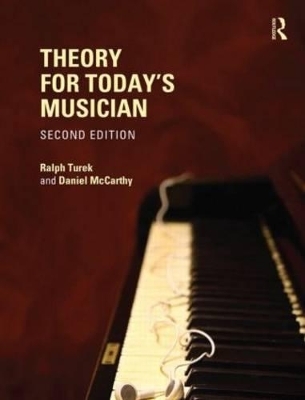
Theory for Today's Musician, Second Edition (Textbook and Workbook Package)
Routledge
978-0-415-73036-5 (ISBN)
- Titel erscheint in neuer Auflage
- Artikel merken
Theory for Today’s Musician, Second Edition, recasts the scope of the traditional music theory course to meet the demands of the professional music world, in a style that speaks directly and engagingly to today’s music student. It uses classical, folk, popular, and jazz repertoires with clear explanations that link music theory to musical applications. The authors help prepare students by not only exploring how music theory works in art music, but how it functions within modern music, and why this knowledge will help them become better composers, music teachers, performers, and recording engineers.
This broadly comprehensive text merges traditional topics such as part-writing and harmony (diatonic, chromatic, neo-tonal and atonal), with less traditional topics such as counterpoint and musical process, and includes the non-traditional topics of popular music songwriting, jazz harmony and the blues. Written by an experienced textbook author and new co-author, both active classroom teachers for many years, Theory for Today’s Musician is the complete and ideal theory text to enable today’s student to accomplish their musical goals tomorrow.
New Features to the Second Edition:
An expanded unit on form that includes introductory chapters on sonata & rondo, to prepare students for learning form
New "Back to Basics" online drills, keyed to the text, allowing students to brush up their fundamentals as needed
New musical examples, including over 80 new musical excerpts from both art and popular music repertoires
Expanded in-chapter exercises to promote and facilitate classroom interaction
Carefully edited in response to market demands to create a more streamlined, flexible text
New audio of musical examples (for both text and workbook), 50% re-recorded for improved audio quality
An updated and relocated Chapter 33 on song composition in the jazz and popular folk styles, applying principles of text setting, melody composition/harmonization
Companion website that houses online tutorial with drills of basic concepts
Part 1: In Lieu of Fundamentals 1. Assorted Preliminaries 2. Intervals Part 2: Diatonic Harmonies 3. Basic Harmonic Structures 4. Musical Shorthand: Lead Sheets and Figured Bass 5. Harmonies of the Major and Minor Scales 6. Cadences/ Harmonic Rhythm Part 3: Melody 7. Melodic Pitch and Rhythm 8. Embellishing Tones 9. Melodic Form Part 4: Voice Leading 10. Melodic Principles of Part Writing/The Outer Framework 11. The Melodic Factor in Four-Voice Part Writing/Voicing and Connecting Chords 12. The Chorale/Part Writing with Root-Position Triads 13. Part-Writing with Triads in Inversion 14. Part-Writing Seventh Chords Part 5: Basic Chromatic Harmony 15. Secondary Function I 16. Secondary Function II 17. Modulation I Part 6: Counterpoint 18. The Art of Countermelody 19. The Fugue Part 7: Advanced Chromatic Harmony 20. Mixing Modes 21. Altered Pre-Dominants 22. Other Chromatic Harmonies 23. Modulation II 24. Harmonic Extensions and Chromatic Techniques Part 8: Form 25. Binary and Ternary Forms 26. Introduction to Sonata Form 27. Introduction to the Rondo Part 9: Music in the Twentieth-Century and Beyond 28. Syntax and Vocabulary 29. New Tonal Methods 30. Atonality and Serialism 31. Harmonic Principles in Jazz 32. The Blues 33. Shaping a Song Appendix A. Pitch Appendix B. Rhythm Appendix C. Basic Lead-Sheet Symbols Appendix D. Part-Writing Guidelines. Glossary. Credits. Index.
| Erscheint lt. Verlag | 27.12.2013 |
|---|---|
| Zusatzinfo | 1625 Line drawings, black and white |
| Verlagsort | London |
| Sprache | englisch |
| Gewicht | 3152 g |
| Themenwelt | Kunst / Musik / Theater ► Musik ► Musiktheorie / Musiklehre |
| ISBN-10 | 0-415-73036-8 / 0415730368 |
| ISBN-13 | 978-0-415-73036-5 / 9780415730365 |
| Zustand | Neuware |
| Haben Sie eine Frage zum Produkt? |
aus dem Bereich
